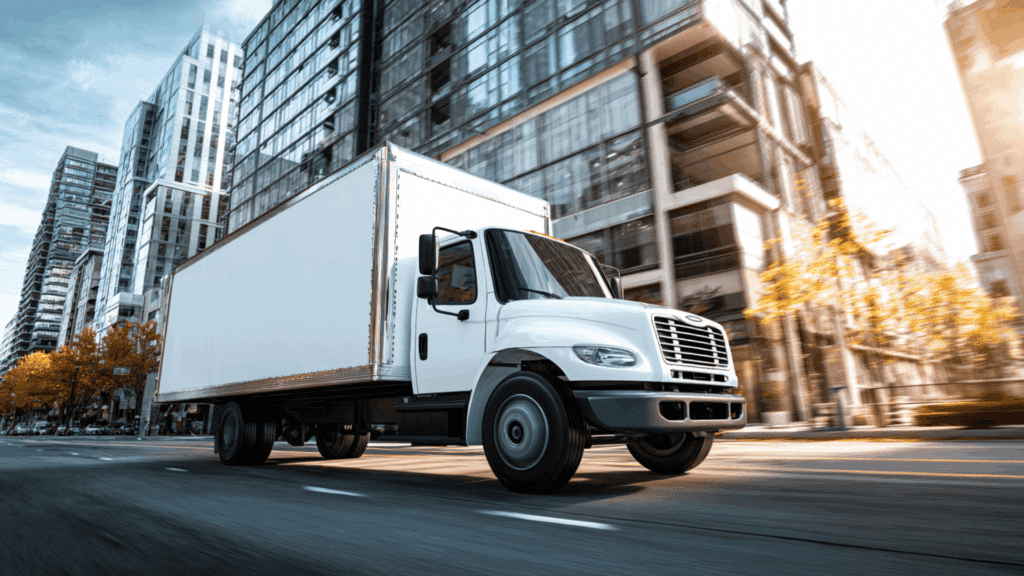Moving to another state can feel exciting and overwhelming at the same time. It’s not just about changing your address; it’s about starting a new chapter in an unfamiliar place.
Whether you’re chasing better opportunities, a lower cost of living, or simply a change of scenery, knowing how to move to another state the right way makes all the difference.
Today, I’ll walk you through how to move out of state, from early research and budgeting to settling into your new home smoothly.
You’ll also find tips for handling paperwork, planning your move, and adjusting once you arrive. Let’s get started.
Research Before You Move
Before you start packing boxes, take some time to really understand where you’re headed. The more you know about your new state, the smoother everything will go once you arrive.
Look into job opportunities and the average cost of living in that area. You’ll want to know if your income can comfortably cover rent, groceries, and daily expenses.
Spend time researching neighborhoods, schools, and local safety stats. This gives you a clear sense of which areas fit your lifestyle and budget best.
If you can, make a short visit before moving. Walk around, check traffic patterns, and talk to locals; it helps you get a real feel for the place.
You can use online tools like:
- Cost-of-living calculators to compare your current expenses with the new city.
- City data sites for insights on schools, housing, and local services.
A bit of research upfront saves you time, stress, and unexpected costs later.
Build a Realistic Budget
Once you’ve done your research, it’s time to crunch some numbers. A clear budget keeps your move organized and prevents surprise costs later.
Start by listing all possible expenses. Think about:
- Moving costs: truck rental, gas, movers, packing supplies.
- Housing costs: deposits, first month’s rent, or down payment.
- Setup costs: furniture, groceries, utilities, and internet setup.
- Travel costs: flights, hotels, meals on the road.
Don’t forget small things like pet transport, storage fees, or cleaning supplies; they add up fast.
If you’re moving with family, include extra savings for emergencies or delays. In my experience, having a small buffer always helps when plans change at the last minute.
Once your list feels complete, compare it against your savings and income. Adjust your plans until the numbers feel comfortable.
A realistic budget makes the entire move less stressful and gives you confidence that you’re ready for the change.
Secure Housing and Employment
Finding a stable job and a place to live before you move can make everything much easier. It gives you peace of mind and helps you settle in faster once you arrive.
Start with the job search. Look on platforms like LinkedIn or Indeed, and try reaching out to recruiters in your new state.
If you can, set up a few interviews before moving. Remote or hybrid roles can also be great options if you’re not tied to one city.
Once you have an offer or steady income, focus on housing. Decide whether you want to rent first or buy later. Renting often makes sense at the start; it gives you time to explore different neighborhoods without long-term pressure.
Here are a few tips to keep things simple:
- Get proof of income ready for rental applications.
- Ask about local housing laws; some states handle deposits and leases differently.
- Check online reviews or visit in person if possible to confirm the place fits your needs.
Having both work and housing lined up before you move makes your transition smoother, saves money, and helps you feel settled faster.
Plan and Pack Efficiently

Packing can be one of the most time-consuming parts of moving, but a little planning makes a big difference. Think of this stage as setting yourself up for a smoother moving day.
1. Declutter and Donate Before Packing
Before you start boxing things up, go through what you own. Get rid of anything you don’t use or love. I’ve found it easier to donate or sell items instead of hauling them across state lines. It cuts costs and keeps things simple.
2. Label and Organize Boxes by Room
Labeling helps more than you might think. Write the room name and a few key contents on each box. It saves hours of confusion when you’re unpacking later.
3. Pack Essentials Separately
Keep one small box or bag with things you’ll need right away:
- Toiletries and medications
- Important documents
- Chargers and small tools
- A change of clothes and snacks
That box should travel with you, not in the moving truck.
4. Handle Fragile and Valuable Items Carefully
Wrap glass, electronics, and décor in bubble wrap or towels. Mark boxes as “fragile” so movers know to handle them gently.
I also like keeping valuables, like jewelry or personal files, with me for extra peace of mind.
Handle Legal and Administrative Tasks
Once your move is underway, it’s time to take care of the official details. Handling these early saves a lot of frustration later.
Start with your driver’s license and vehicle registration. Most states give you 30 to 90 days to update them after moving. Check your new state’s DMV website to find exact requirements.
Next, update your address everywhere it matters:
- Banks and credit cards
- Insurance providers
- Employer and payroll
- Subscriptions and deliveries
- Voter registration
Don’t forget to forward your mail through the U.S. Postal Service. It’s quick to set up online and makes sure nothing important gets lost.
If you’re moving across state lines, you may also need to update your car insurance. Some states have different coverage rules, so confirm you’re still compliant.
Taking care of these tasks early means you can focus on settling in, not paperwork, once you arrive.
Plan Moving Day Logistics
Moving day can get hectic, but a solid plan keeps things running smoothly. I like to think of this as the “execution phase,” where everything you’ve prepared finally comes together.
Decide whether you’ll hire professional movers or do it yourself.
- Hiring movers saves time and heavy lifting but costs more.
- A DIY move is cheaper but requires planning, packing, and driving the truck yourself.
If you go with movers, get at least three quotes and check reviews. Make sure each company is licensed and insured. For DIY moves, reserve the truck early and confirm pick-up and drop-off times.
If you’re moving with pets or kids, plan for extra breaks during the trip. Pack snacks, comfort items, and essentials in an easy-to-reach bag.
Here’s a quick checklist for moving day:
- Confirm mover or truck reservations
- Double-check boxes and labels
- Keep your essentials bag handy
- Take meter readings and photos of your old place
- Do one final walkthrough before locking up
Once everything’s on the truck, take a deep breath. You’ve handled the hardest part; now it’s time to look forward to your new home.
Settle Into Your New Home

After the long drive and unpacking, take a little time to breathe. This step is about getting comfortable and making your new place feel like home.
Start by setting up your essentials: electricity, gas, water, trash, and internet. Getting those running early helps you settle in faster.
Next, find local services you’ll need soon, like a nearby grocery store, doctor, dentist, and pharmacy. It helps to keep a small list of these for quick access.
If you have kids, look into schools and after-school programs right away. For everyone else, try joining local community pages or groups to stay informed about events and services.
Spend some time exploring your neighborhood. Walk around, check out local restaurants, parks, and trails. It’s the best way to get familiar with your new surroundings and meet people.
Settling in takes time, but small steps every day make your new state start to feel like home.
How to Move Without a Job or With Limited Money
Moving without a job or with tight finances can feel risky, but with some planning, it’s possible to do it safely. I’ve seen people pull it off by being careful about timing and smart with their money.
Start by building a small savings cushion. Aim to cover at least three months of rent and basic living costs. That buffer gives you breathing room to job-hunt without stress.
Look for temporary or remote work options you can start before or right after moving. Gig jobs, freelancing, or part-time roles help cover costs until you find something stable.
When it comes to housing, consider flexible or short-term options:
- Room rentals or shared housing
- Extended-stay hotels or sublets
- Staying with family or friends temporarily
Research whether your new state offers relocation incentives or grants. A few places provide money or tax breaks to attract new residents.
Keep your expenses low during the first few months; cook at home, use public transportation, and buy only what you need.
It’s not easy starting over with limited funds, but a clear plan, flexibility, and steady effort can make it work.
Common Mistakes to Avoid
- Underestimating costs: Hidden fees like deposits, tolls, and cleaning costs add up fast. Always build a small buffer into your budget.
- Skipping address updates: Forgetting to change your address can delay mail and bills. Update it early with your bank, employer, and post office.
- Overpacking or hauling too much: Moving things you don’t need wastes time and money. Sell, donate, or toss anything you rarely use.
- Ignoring insurance and registration updates: Each state has its own rules for car insurance and licensing. Handle those changes as soon as you arrive.
- Forgetting emotional adjustment: Relocating takes a mental toll. Stay connected with friends and explore your new area slowly to ease the transition.
Avoiding these mistakes helps you save money, stay organized, and settle into your new home with less stress.
Wrapping Up
Moving to another state is more than just packing boxes; it’s a fresh start that takes planning, patience, and a bit of courage.
From budgeting carefully to handling legal details early, every step helps you feel more in control of the process. In my experience, the key is staying flexible and giving yourself time to adjust once you arrive.
Remember, it’s not just about changing your address; it’s about building a life that fits your goals and lifestyle.





